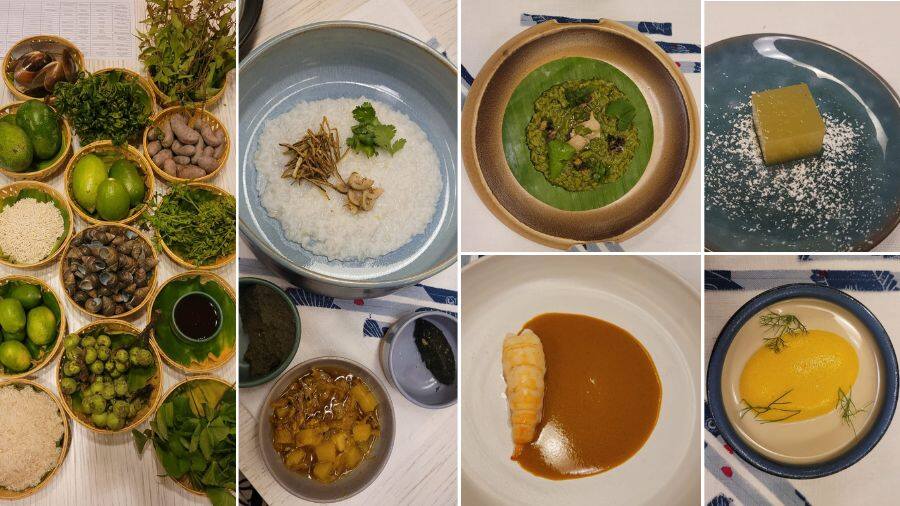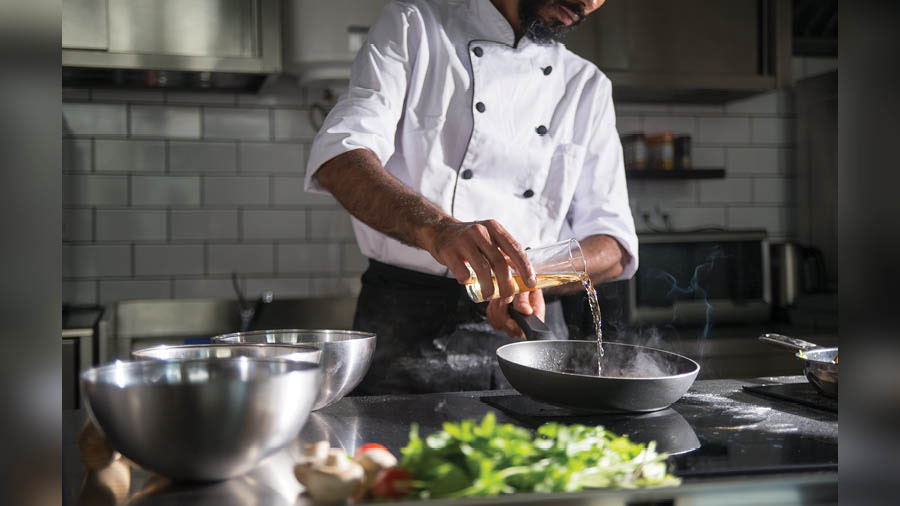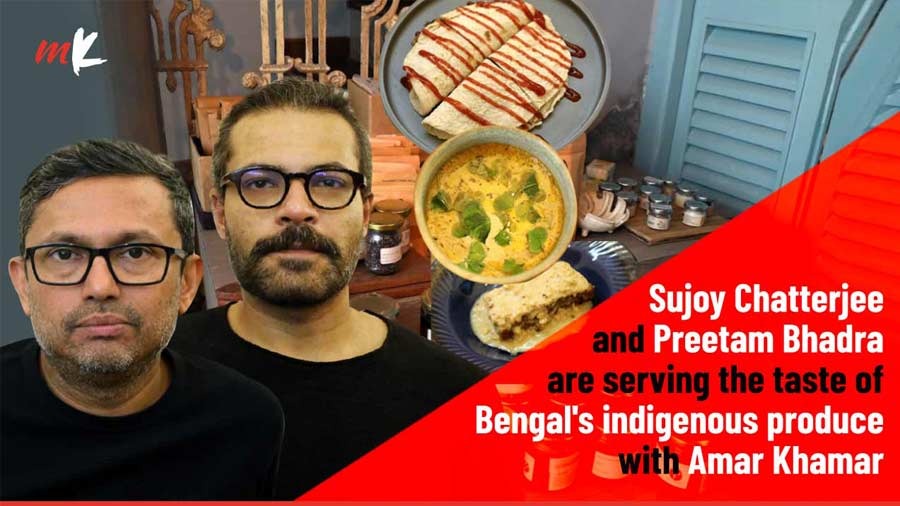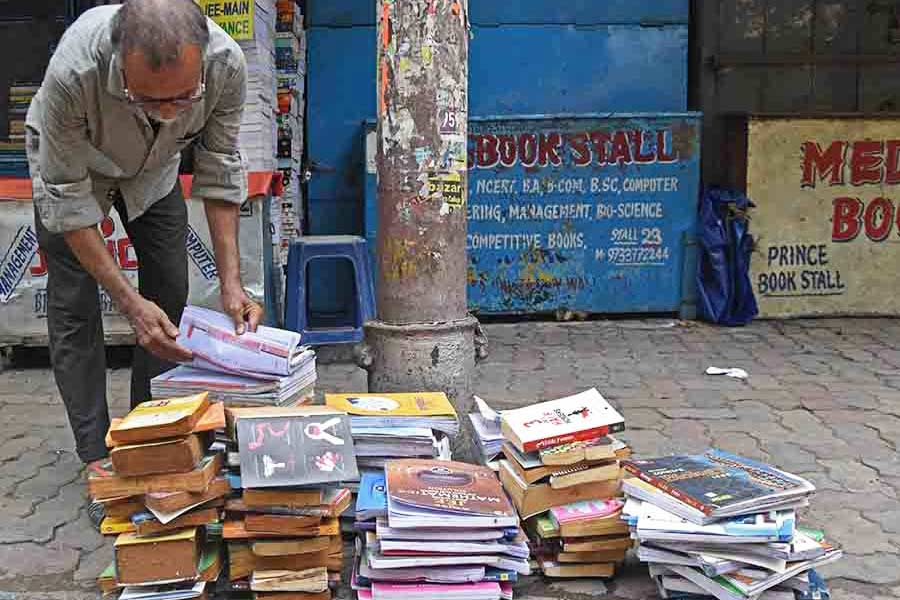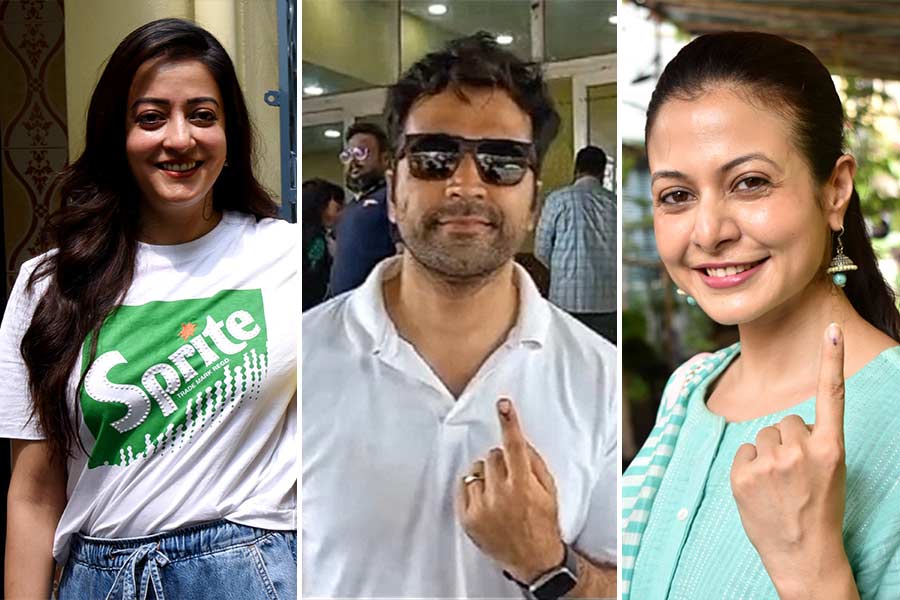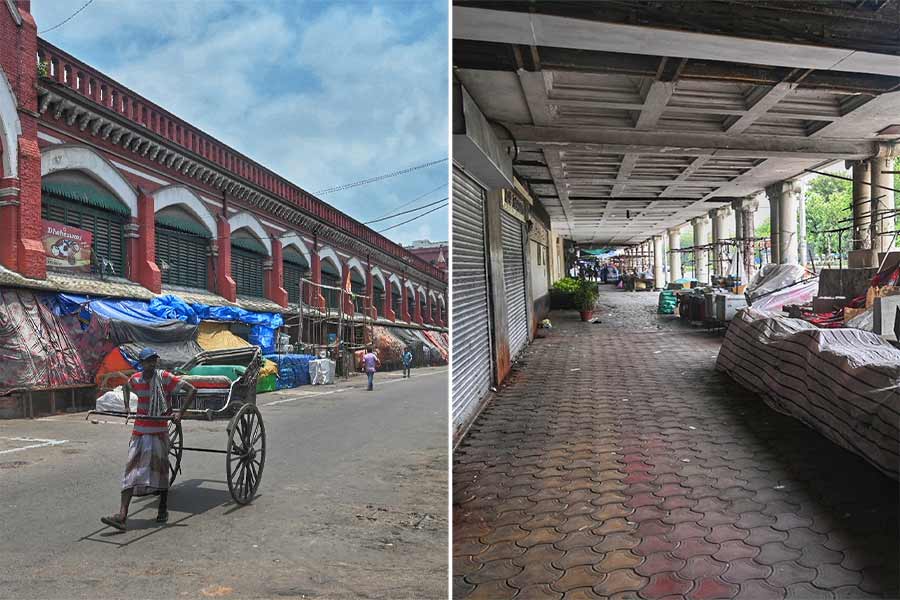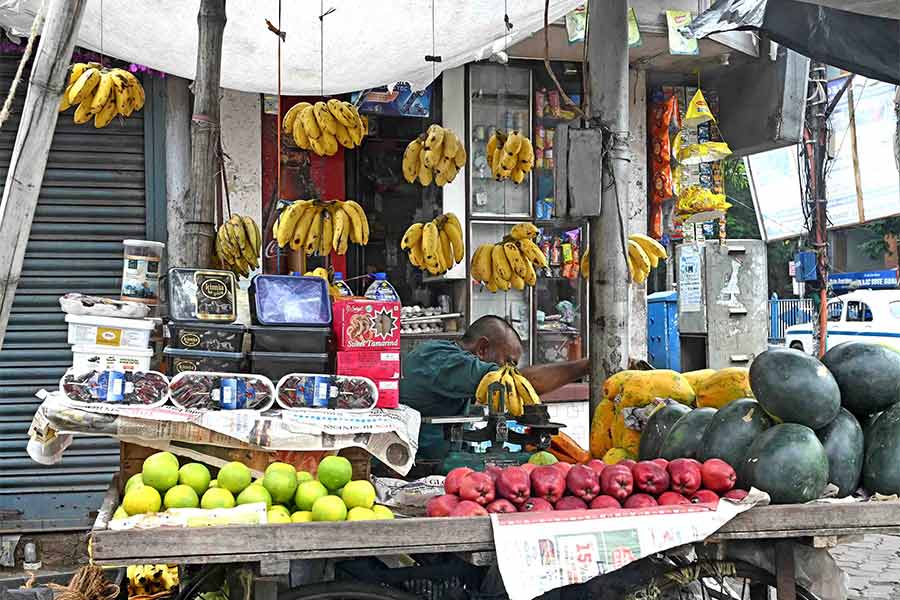What do you put in a tasting menu that attempts to show off the best of Bengal’s flavours and ingredients? If you grew up a true-blue Bangali, the first morsel of Sienna Café’s Bajaar to Table tasting menu will transport you back to your childhood, and to the comfort of traditional home-cooked food.
After successful, burp-and-joy-inducing pop-ups in Mumbai and Delhi, the Sienna kitchen brought its ‘Bajaar to Table’ tasting menu home and My Kolkata was there to savour it all.
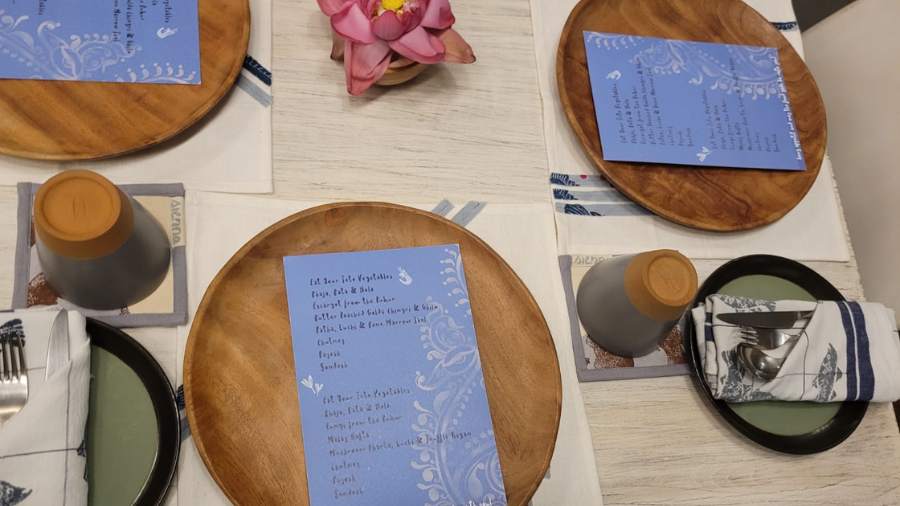
The taste of the land, in eight (plus one) courses
A traditional Bengali thali, if you must, has stages of flavours, starting with the bitter notes, on to the vegetables, the fish and the meat, with a chutney towards the end, and finally ending on a sweet note. A pattern you’d expect, even look forward to, and the Sienna team does not disappoint on that account.
A shot of teto: The tasting menu begins with neem begun and shukto. The fried neem-begun packed into one mouthful of bhaat-golla (a little laddoo of rice), is the morsel that sets the tone. The aromatic Radhatilak variety of rice only adds to the eating experience. Accompanying the rice golla is a cup of gazpacho-like shukto. The flavours of the traditional shukto, vegetables and all, are distilled into a creamy broth, with a drizzle of radhuni pata oil, and topped with a thin wafer with a shojne danta guac and sojne daanta pearls.
Our pick: The shukto. All the layered flavours packed into a single shot and for those partial to that zing of radhuni or mustard, you’ll get the ideal hit.
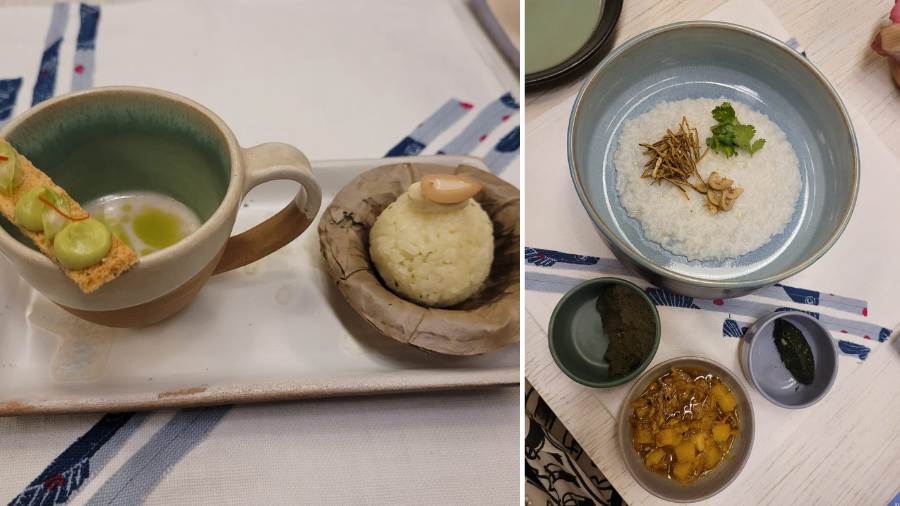
Course one, Teto and (right) Course two, Bata, Bhaja and Hola
Bhaat, bata, bhaja: The second course was all about torkari — veggies and greens and the different ways they are eaten. The robust bata (cooked mashes) featured almost every gourd imaginable flavoured with garlic; the bhaja (fried) featured note shaak (green amaranth), and for the curry there was a hola, a quintessentially Bengali preparation that features a turmeric gravy, generous amounts of mustard oil, and perhaps a simple phoron or tarka. The vegetarian version featured bamboo shoot and potatoes, while the non-vegetarian version had crispy fried kaachki maachh (Ganges river sprat) flavoured with kalo jeere. Tying the whole thing together was the plate of perfectly made gola bhaat, the kind that harkens to a comfort meal of sheddho bhaat (overcooked starchy rice), topped with some pickled dumur or cluster fig and lau-khosha bhaja (fried gourd peel).
Our pick: The hola with kaachki maachh, for its vibrant flavours of fish and mustard oil — a perfect side to the gola bhaat, which was made with the stubbier, nutty Chinekamini rice, often used to make bhoger khichuri.
The pukur-to-table course: Perhaps one of the most creative courses on the menu, this one featured ingredients you would forage from or around a pukur or pond. A risotto-like rice, made with Tulaipanji grains and thankuni pata (pennywort leaves) and kolmi shaak (water spinach) bata, with shitake mushrooms for the vegetarian option and geri-googli — escargot and mussels — for the non-vegetarian version.
Our pick: The sweet, chewy escargot.
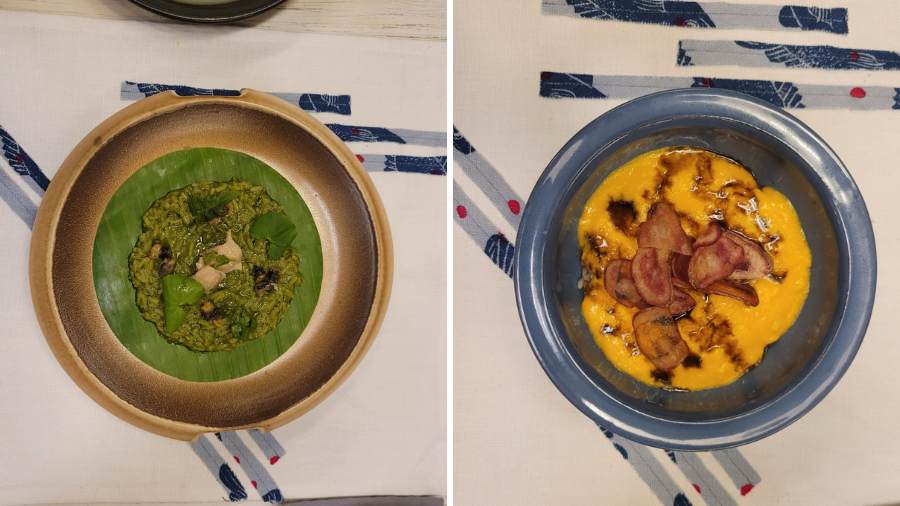
The pukur-to-table course and (right) the surprise course
The surprise course: This ‘plus one’ course, which was a surprise addition, featured the creamiest scrambled eggs on a bed of rice and drizzled with a crab caramel. The robust, mildly sweet seafood caramel adds the perfect brightness to the melt-in-your-mouth eggs, all of it complemented by the crunch of pink Badami alu wafers. The vegetarian course was served with tofu and a mushroom caramel.
Our pick: The whole thing.
The battle of luscious curries: It is highly unlikely that a Bengali will not have a memory attached to chingri maachher malai curry or kosha mangsho and courses five and six heroed their flavours and quirks. The Butter Poached Golda Chingri and Ghilu, featured a butter poached deshelled lobster tail in a thick malai curry-inspired sauce that was also flavoured with ghilu — the prawn marrow inside the lobster head that almost every Bengali has squeezed out and mixed with rice when savouring a malai curry. The Patha, Luchi and Bone Marrow Jhol was a nod to another such homely Bangali tradition – the presence of fat-cocooned pieces of mutton and the flavour of cooked marrow that you would usually suck out of the bone. With a mutton crackling (a Sienna special), meat that came apart at the touch of a fork, the rich perfectly-spiced curry, golden-fried baby potatoes in a meaty jhol and light fluffy luchis on the side, this was an indulgent see-off to the mains.
Our pick: The malai curry, with a special mention to the sauce.
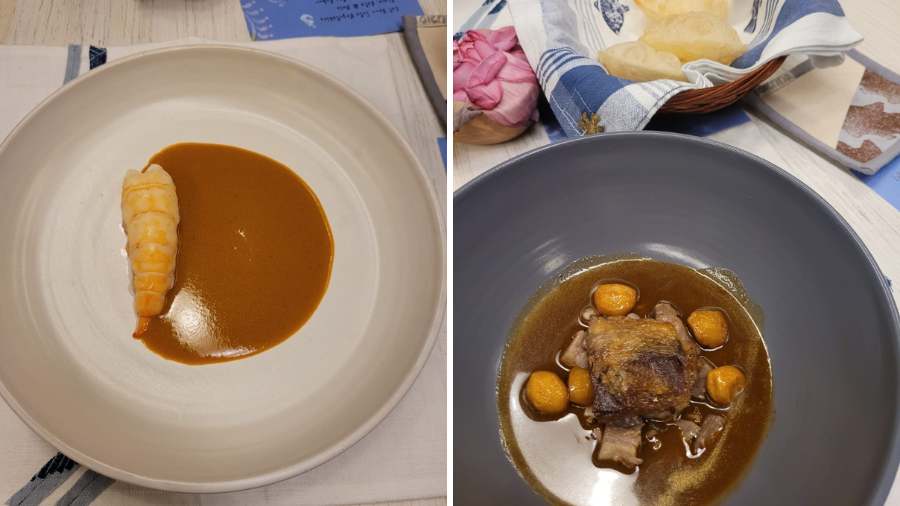
The malai curry-inspired course and (right) the Patha, Luchi and Bone Marrow Jhol
Sour, sweet, and scrumptious: The Chutney, Payesh and Sondesh are the last three courses. The chutney is not a dessert in the Bengali thali, it’s the transition to the dessert, a palate cleanser often enjoyed with some rice. For their Chutney, the Sienna kitchen recreated an entire bowl of mango chutney or aamer chutney — the sweet-sour medley of green mangoes and sugar, the flavour and aroma of paanch phoron — in a cube of jujube, dusted with citric sugar.
Once the transition is gobbled in a bite, there are two desserts that simultaneously remind you of home and indulgence. The Payesh was a choshi payesh, with a floating quenelle of mango custard, and the Sondesh brought together Bengali culinary traditions and the chef Auroni’s Delhi roots in one dessert. Inspired by the airy daulat ki chaat, this was a whipped sandesh that was both creamy and light, with a dark, decadent floral-fruity treacle made with mahua flowers and a drizzle of lemon oil.
Our pick(s): The Chutney and the Sondesh
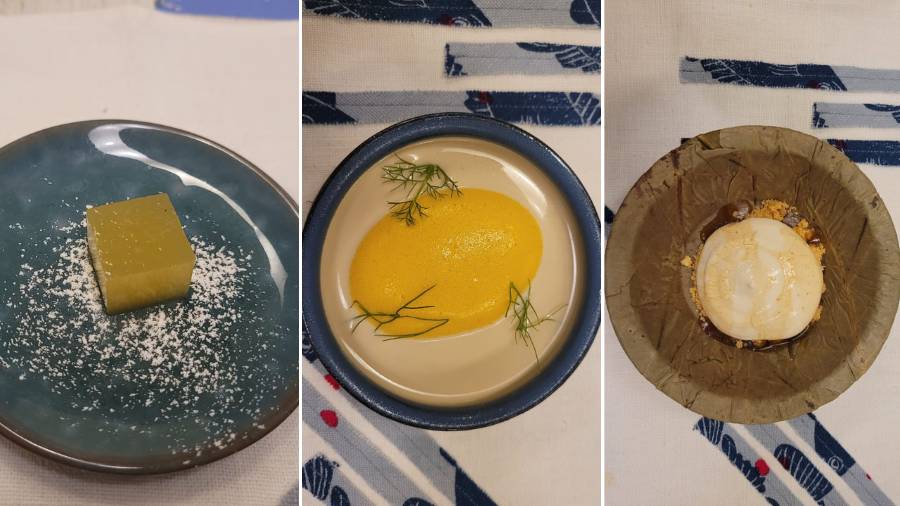
L-R: The Chutney, Payesh and Sondesh
The special tasting menu experience was organised at Sienna’s Store at Cafe at Hindustan Park every Thursday-Friday this month. Unfortunately, they are fully booked for all days this time. The team does plan to introduce more such tasting menus showcasing their ‘Bajar to Table’ philosophy. For updates on upcoming tasting menu events, check their social media.


